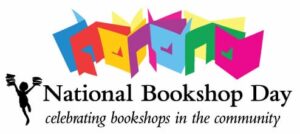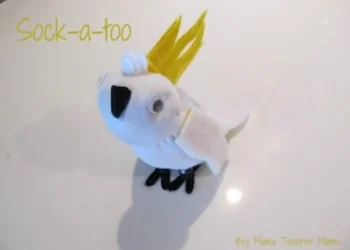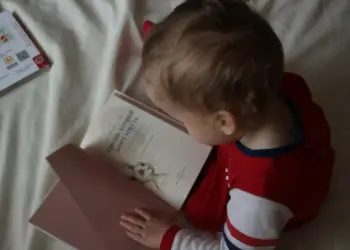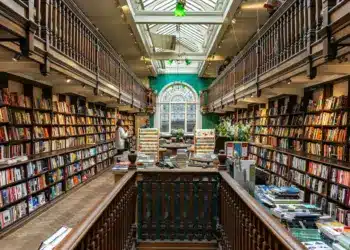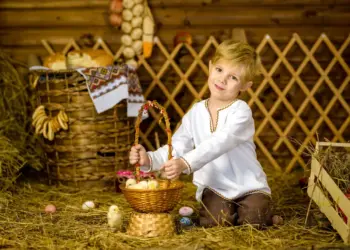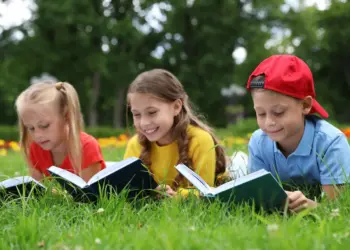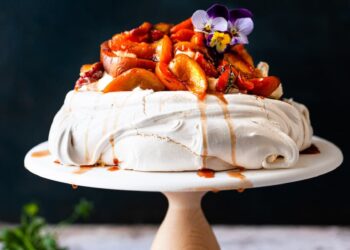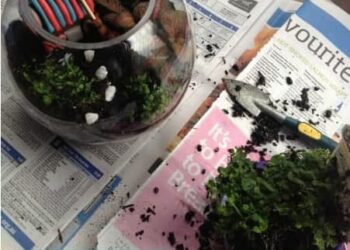Australia’s second National Bookshop Day is nearly here. In the lead-up to this wonderful event, I’ve been thinking about the value people place on picture books. I know how I feel about them.
Not everyone agrees with me though!
Since I began My Little Bookcase, I’ve regularly been told by people that they think full-priced picture books are too expensive. Everyone is certainly entitled to their opinion, but this is one that upsets me terribly.
In Australia, a quality hardback will generally retail for $20 to $30, which interestingly is the same price they were 10-15 years ago (despite many other products increasing in price over time, including the cost of paper and printing). This means that authors and illustrators, whose royalties are based on the RRP of a book, are being paid significantly less than they were ten years ago.
I’m always a little surprised when parents complain about spending $25 on a picture book yet happily part with $60 on a pair of shoes, which their toddler will outgrow in a number of months.
Likewise, I often see plastic toys piled high on hard rubbish collection heaps that would have cost parents far in excess of $25. I sometimes wonder why it is that toys are considered value for money, whilst quality books aren’t considered in the same way.
Is $25 really too much to pay for:
- A book that is well-written, well-illustrated, and a pleasure to read, even when on high rotation?
- 32 pages of true art?
- The quality time a picture book allows you to spend with your child when you sit down to read together (not to mention the closeness you experience as you snuggle together to view the book)?
- The foundations a picture book can provide your child in their reading and language development (Which will undoubtedly set them up for some amazing lifelong learning)?
- A product that can remain in a child’s heart and bookcase forever; a product that will bring them so many memories; a product that they will possibly share with their own children and grandchildren?
- A book that will help in stimulating your child’s imagination and interest in the world around them?
So what is it about the price of picture books that disgruntles so many people?
I’d like to challenge some of the negative thoughts you might have about the price of picture books.
After working on My Little Bookcase for nearly two years, I’ve come to know many brilliant authors, illustrators, publishers, and bookstore owners. I’m in a fortunate position to be able to understand (to a small degree) what goes on behind the scenes, and I feel obliged to share some of this information with you.
I’ve come to know many authors who experience sleepless nights worrying about their work, who work for hours perfecting their stories for children, and who leave their families behind as they travel the country to share their work with other children.
I’ve chatted to illustrators who work around the clock to meet deadlines, some books taking them years to illustrate. There are even some amazingly talented illustrators who doubt their abilities.
I know publishers who believe in what they do. They publish picture books because they believe that tangible books can make a difference in the lives of children. I also know they experience many stresses, including the stress of finding enough money to offer illustrators for the incredibly long hours they work on the books.
I know bookshop owners who love books as much as you do and have so much knowledge and experience to share, but they struggle to keep their businesses afloat.
THERE ARE SOME THINGS YOU SHOULD KNOW:
- A picture book often takes two years to complete (sometimes longer)
- Producing a picture book requires the work of an author, illustrator, editor, publisher, designer, art director, production manager, proof-reader, contract manager, production houses, printers, managing director, sales manager, sales representative, marketing manager, publicists, and distributors (I’m sure I’ve missed others). Each and every one of these people needs to earn an income to support their families.
- The profit breakdown below is just a rough approximation, but it gives you an idea of where your $25 goes:
- Authors and illustrators receive approximately 10% of profits ($2.50 per book)
- Publishers receive approximately 30-40% of profits. This is used to cover production costs and pay wages. ($7.50-$10.00 per book)
- Book retailers receive approximately 40-50% of profits. This is used to pay wages and shop expenses such as rent etc. ($10.00-$12.50)
- Mass market and discount book outlets (These are the retailers that buy in bulk and sell books at discounted prices) receive a great deal of more than 50% of profits. Their extra percentage comes at the expense of authors and illustrators who then receive less than 10%
- Sometimes booksellers need to reduce the price of books to sell old stock, but when you buy books at a discounted price, it usually means that the retailer has purchased the books from the publisher at a heavily discounted price. If the discount goes too high there is barely enough to cover the actual production costs of the book. If authors and illustrators are receiving approximately 10% of the publisher’s net profit, it certainly doesn’t leave them with much.
- Sometimes for publishers, selling books at discounted prices to discount book outlets saves a book from being pulped. Doesn’t this sound horrible? Thankfully, this is a last resort.
I’d be a hypocrite if I told you that I haven’t ever bought books from discount retailers, and I’m certainly not condemning you for buying discounted books; Money is tight in many Australian households and I understand the lure of purchasing discounted books.
But as you can see, there is a lot at stake when you buy discounted books. I try to support local bookstores (and in turn local authors, illustrators, and publishers) as much as I possibly can, and I hope you will consider doing the same.
There are so many wonderful events taking place around the nation. We’ve begun a little list here, which includes bookshops holding events for children.
There are many authors, illustrators, publishers, and booksellers who have helped me (both intentionally and inadvertently) with this post. You know who you are, and I thank you for helping me spread my love and appreciation for picture books.



